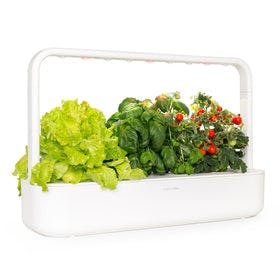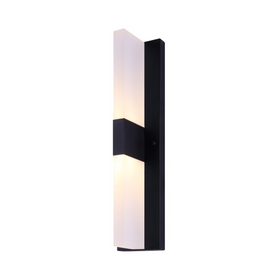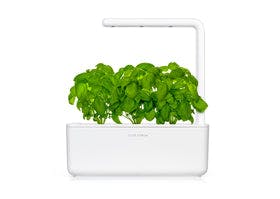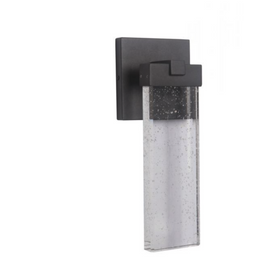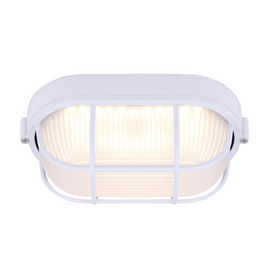
Fruit Tree Guilds for Your Backyard's Resilience
Last Updated: Apr 13, 2025In nature, plants don’t require inputs of fertilizers, pesticides, or herbicides. They have adapted to work together, fill niches, and rely on the strengths of others to offset their own deficiencies.
As a homeowner, you can take advantage of nature’s successes in your backyard with plant guilds— and cut unnecessary long-term costs and work.
Table of Contents
- What is a Guild?
- What Do I Consider Before Starting a Tree Guild?
- What are the Steps to Planting a Fruit Tree Guild?
- What Goes into the Layers of a Fruit Tree Guild?

What is a Guild?
A guild, in this context, is a grouping of different plant species that takes advantage of the natural patterns of biodiversity. Plant guilds create a low-maintenance, self-sufficient system that coexists due to its diversity of functions. Some guilds are naturally occurring in nature, while gardeners have discovered others through trial and error.
Want to see a guild in action? Take a walk in a nearby nature park to find guilds that exist in areas near you. What you’ll notice is that many guilds take advantage of layering to reduce competition for sunlight. Each plant in those layers supports the surrounding plants and often have multiple purposes.
Guilds are focused around a central element. This focal piece is typically a fruit or nut tree. Around the tree, plants are selected to enhance and support growth. Some of the ways plants in the guild can be used to support your central element are:
- Fertilization
- Pest deterrent
- Mulch production
- Grass suppressant
- Pollinator and beneficial insect attractants
- Wildlife deterrent
When designing a guild at home, you will want to aim for plants that will save you time, money, and labor. The initial set up is the costliest part, as you are buying all the different elements within a short timeframe. In the long run, though, you will have a more durable and resilient garden. These systems will become more resilient as they protect soil from sunlight and erosion, restore nutrients to the ground, and otherwise support the system as a whole over many years.

What Do I Consider Before Starting a Tree Guild?
There is no exact guide as to what goes into a guild; even definitions of the different layers of the guild will vary from source to source. Due to differing regional climates and localized microclimates, there will need to be a decent amount of research into what combinations will work best for your site. Figuring out the central element and the qualities you will need in pairing plants requires some upfront research. For example, does it need pollinators? Is it susceptible to fungus? How sensitive is it to frost?
You will want to design a guild that is going to fit into your yard space appropriately. Start by planning for the maximum size of your tree. Some semi-dwarf fruit trees average anywhere between eight to ten feet with a six or seven-foot crown. More vigorous trees can be 18 to 20 feet, with a crown spanning 13 feet or even more! So be sure to take into account powerlines, underground pipes, concrete paths, and neighbors before you start.
The canopy of the tree, within the dripline, dictates the size of the guild. The dripline is typically the extent of the root’s reach, as this is where accumulated water from the outer leaf layers will drip down. Occasionally, tree roots can and will reach beyond the dripline given appropriate conditions. To trace the drip line of the tree, place a stake at the center of your design attached to a string equal to half the crown diameter. Attach a stick for tracing at the end, and draw a circle around the center.
What are the Steps to Planting a Fruit Tree Guild?
- First, select a fruit tree appropriate to your climate region. Some trees, such as apple or plum trees, require chill hours, while others will die in cold climates. After finding the ideal location and being sure to leave enough space for maturity size, plant the tree.
- Next, prepare the space. Adding a drip line will cut down on future watering time until the tree guild is established enough to support itself. For the area around the tree, lay down a layer of cardboard to the drip line and wet it thoroughly. Add three to six inches of compost on top of the cardboard, making sure to keep the compost a few inches away from the tree trunk. At this point, some designers will choose to let the compost sit for a few months, while others will move directly into planting.
- Plant the guild with various herbaceous plants, being sure to give preference to perennial and self-seeding annual systems. Every plant should have a purpose in the guild, preferably more than one function, honoring principle #8, so try not to plant something to fill space.

What Goes into the Layers of a Fruit Tree Guild?
There are plenty of plants to add to the varying layers of a fruit tree guild. Johnathon Engles in Permaculture News has a great list of potential guild plants. Here are a few for your consideration.
1. Centerpiece Plant
The centerpiece plant is a central element of the guild, and in most cases, this is the primary crop you’re hoping to harvest. These are typically fruit and nut trees, but even a tomato plant or berry bush can have a guild around it. Common centerpiece plants include apple, pear, chestnut, and avocado.
2. Secondary Plant
The secondary plants are typical of large guilds or even the beginning of a food forest. These are understory trees that will still receive enough light after the centerpiece has grown to maturity. Remember that some trees, apple, for example, require two trees of a different variety to pollinate. Some common examples of secondary plants are hazelnut, dwarf-apple, citrus, and peach.
3. Nitrogen Fixers
These plants draw nitrogen from the air and use rhizobia bacterium within root nodules to produce nitrogen for the plant. When these plants die back, the stored nitrogen is released to the other plants around it. Common nitrogen fixers include but are certainly not limited to: lupine, clover, alder, and alfalfa.
4. Dynamic Accumulators
These accumulators are plants that pull various beneficial nutrients up from deep in the soil and store them in the plant. When they die back in the fall, they release these nutrients to the surrounding plants. Now, take this layer with a grain of salt, because there isn’t a lot of research into dynamic accumulators. Though some plants are known to hyper accumulate, most information out there is still guesswork. Common accumulators include comfrey, borage, chickweed, and mulberry.
5. Ground Covers
The use of ground cover is highly overlooked in gardening. Nature doesn’t leave soil bare for long, often filling it with quick-growing annual “weeds” that will shade the soil and reduce erosion. By choosing your own ground cover, you are taking the onus off nature and taking advantage of an overlooked space. Common edible ground covers include sweet potato, cucumber, pumpkins, and strawberries.
6. Pest Control and Pollination
Plant a wide variety of flowers in the guild, making sure that there is always at least one group in bloom throughout the growing season. This shows pollinators and beneficial insects that your home is a great place to find food, encouraging them to stay and do what they do best. Some good examples include bee balm, basil, marigolds, and lavender.
Designing a guild to fit your backyard isn’t going to happen overnight. It will take planning and research and, even then, not every combination will work. But follow the trail of successes until you have got your guild established. Then, share your accomplishments and bounty with friends, family, and neighbors!
Tanner Sagouspe
Tanner Sagouspe has a Masters in Environmental Management and is a Permaculture Designer who promotes tackling the climate crisis at home.

